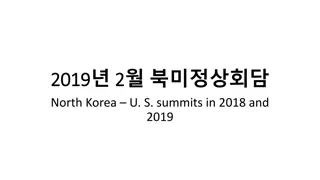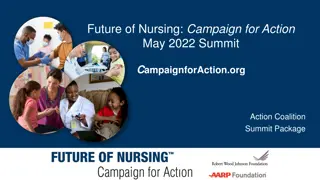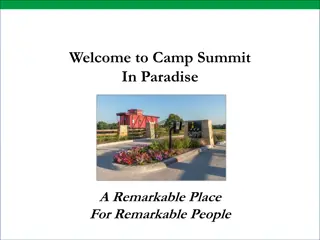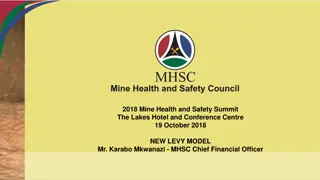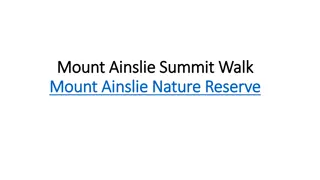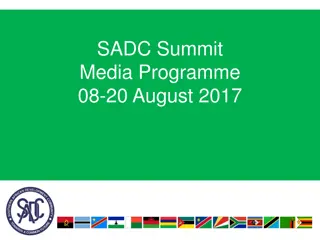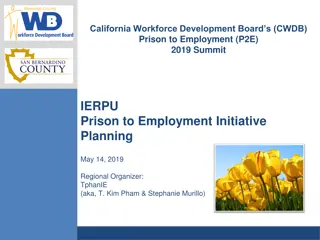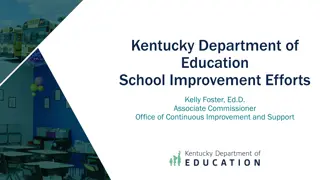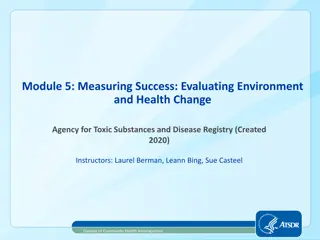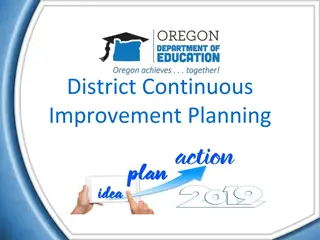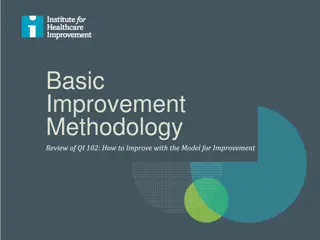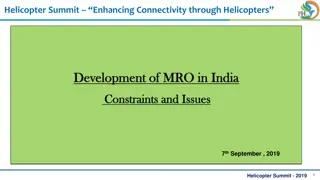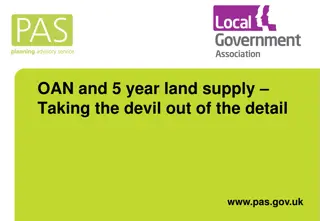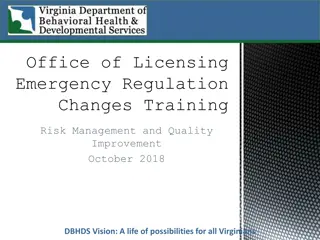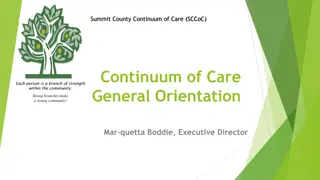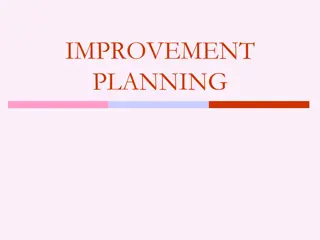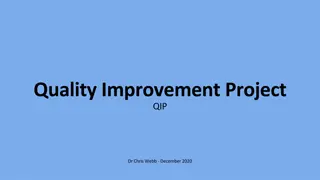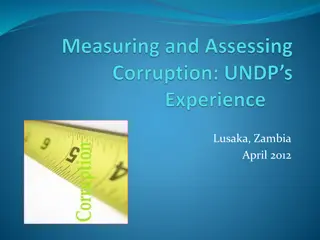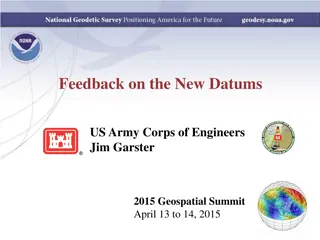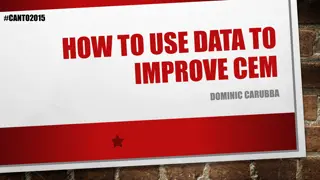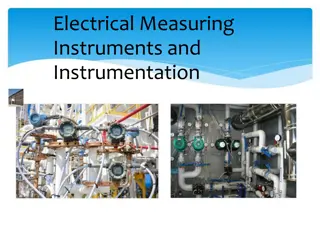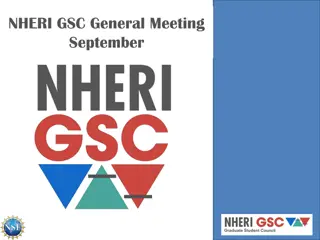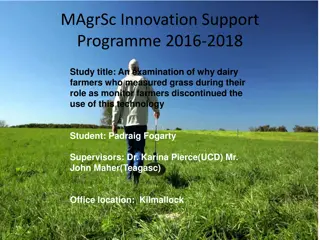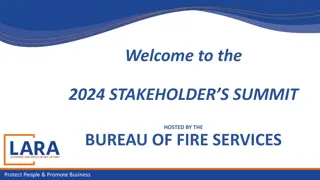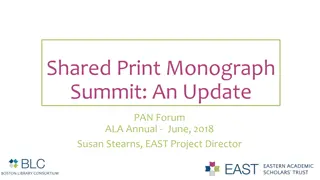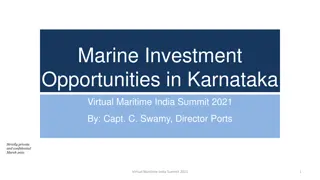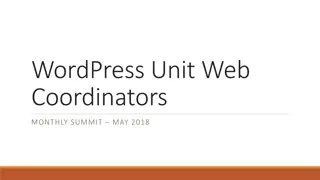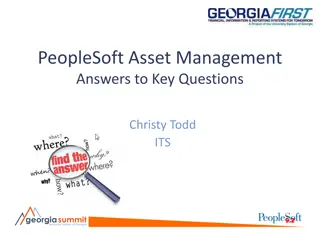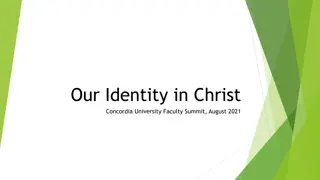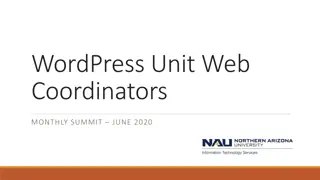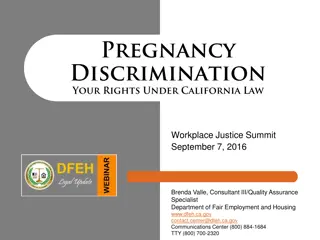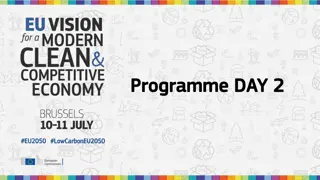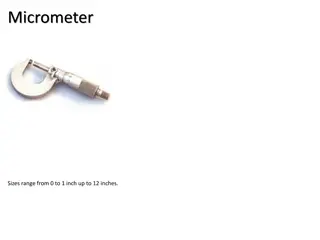Planning Summit October 2019: Measuring Our Success and Improvement
Gathering at the Planning Summit in October 2019, participants delved into reviewing institutional set goals, targets, and brainstorming stronger leading measures for desired outcomes. The event emphasized the importance of using data effectively for improvement planning and achieving success. Various topics such as enrollment rates, completion metrics, and student readiness were discussed in detail, highlighting the progress made and future goals set for the educational institution.
Download Presentation

Please find below an Image/Link to download the presentation.
The content on the website is provided AS IS for your information and personal use only. It may not be sold, licensed, or shared on other websites without obtaining consent from the author. Download presentation by click this link. If you encounter any issues during the download, it is possible that the publisher has removed the file from their server.
E N D
Presentation Transcript
Measuring our Success for Improvement Planning Summit October 2019
You are such a data nerd. Mike Sosenko Planning Summit October 2019
Pair Share What is your data language? Planning Summit October 2019 5
What will we accomplish today? Review Institutional Set Goals, Targets Brainstorm stronger leading measures for these outcomes Link to next year s plan Planning Summit October 2019
HOW ARE WE USING DATA NOW? Planning Summit October 2019 7
Tartar Completion by Design PROGRESS Entry into Course of Study through Completion of 75% of Requirements COMPLETION Complete Course of Study through Earning a Credential with Labor Market Value TRANSITION Movement to Four-Year University or to Workplace with Living Wage CONNECTION Initial Interest through Submission of Application ENTRY Enrollment through Completion of Gatekeeper Courses Planning Summit October 2019 8
Institutional Set Goals Measure 2016-17 Baseline 2017-18 Most Recent 2021-22 Goal (Assessed Annually) 44.8% 8,702 students Successful Enrollment (Applicant yield rate) 42.3% 42.0% 8,320 students 8,151 students Current Baseline (2017-18) Disp. Impacted Students American Indian / Alaskan Native Black or African American Pacific Islander White Disabled Foster Youth CONNECTION Initial Interest through Submission of Application 28% 36% 34% 32% 37% 33% 34% 39% 38% 36% 42% 40% 37% 34% 42% 40% LGBT Veteran Planning Summit October 2019 9
Institutional Set Goals Measure 2016-17 Baseline 2017-18 Most Recent 2018-19 2021-22 Goal (Assessed Annually) Number of Dual Enrollment Students Student Readiness Rate (Core Service Completion) All Students Fall-to-Spring Persistence Rate First-Time Full- Time Students Returning after One Academic Year Completion of Transfer-Level English in First Year Completion of Transfer-Level Math in First Year 1,114 1,131 1,253 1,206 54.7% 72.3% 100.0% 57.5% 53.7% 53.1% 57.3% 3,747 Students 3,652 Students 3,600 Students 3,899 Students 55.7% 59.7% 57.4% 63.7% ENTRY 231 Students 230 Students 228 Students 245 Students Enrollment through Completion of Gatekeeper Courses 15.7% 13.6% 14.2% 27.0%VS 281 Students 185 Students 142 Students 138 Students 3.1% 3.1% 3.2% 11.0%VS 114 Students 36 Students 32 Students 24 Students Planning Summit October 2019 10
Institutional Set Goals All Students Fall- to-Spring Persistence Rate 57.5% 53.7% 53.1% 57.3% 3,747 Students 3,652 Students 3,600 Students 3,899 Students Current Baseline (2017-18) Disp. Impacted Students Black or African American First Generation Foster Youth Veteran Male & 20 to 24 Male & 25 to 29 Male & 35 to 39 Male & Asian Male & Black or African American Male & White Male & First Generation Male & Foster Youth 49% 50% 42% 36% 49% 43% 43% 34% 52% 54% 50% 46% ENTRY Enrollment through Completion of Gatekeeper Courses 45% 33% 48% 35% Planning Summit October 2019 11
Institutional Set Goals Measure 2016-17 Baseline 2017-18 Most Recent 2018-19 2021-22 Goal (Assessed Annually) Course Success Rate (Institution-Set Standard = 62.6%) On-Campus Success Rate Distance Ed. Course Success Rate Average Units Completed per Academic Year (Part-Time) Average Units Completed per Academic Year (Full-Time) 68.1% 68.9% 66% 73.5% 26,023 Grades 24,474 Grades 23,156 Grades 26,108 Grades 68.8% 69.4% 66.% 74.0% 23,978 Grades 21,860 Grades 18,515 Grades 23,256 Grades 61.3% 63.1% 66.1% 67.3% 3,337 Grades 4,066 Grades 4,641 Grades 4,335 Grades PROGRESS Entry into Course of Study through Completion of 75% of Requirements 6.7 6.5 6.4 12.0 20.6 23.6 22.4 24.0 Planning Summit October 2019 12
Purposes of data use Report Improve Advocate Planning Summit October 2019
Report Advocate Improve Planning Summit October 2019
Report Improve Advocate Planning Summit October 2019
What are the key ways you want to improve? Improve PROGRESS Entry into Course of Study through Completion of 75% of Requirements CONNECTION Initial Interest through Submission of Application ENTRY Enrollment through Completion of Gatekeeper Courses Did we make any progress in 2018-19? How are departments doing this work measuring success? How can we link department measures to these measures? Planning Summit October 2019
What is a logic model? Process Outcomes if if if if then then then then Inputs Leading Activities Outputs Lagging Planning Summit October 2019
Leading and Lagging Indicators Leading indicators Reflect students current needs Can predict future success/failure Are relatively in one s control Lagging indicators Reflect how things ended up Tracking trends Planning Summit October 2019
Survey Planning Summit October 2019 19
Thank You! QUESTIONS? Lauren Sosenko Director, Institutional Effectiveness lsosenko@compton.edu Planning Summit October 2019 20


